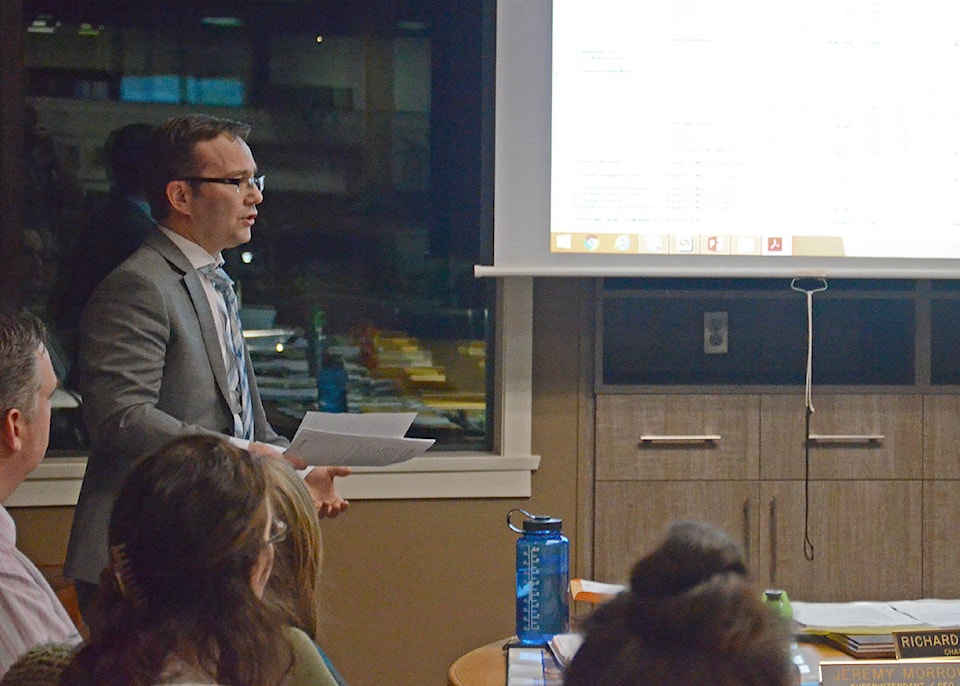For several years, School District 72 has been expecting deficits when planning for future budgets, then balancing them as required by the province as the numbers become finalized.
The coming year though could be a little different, according to secretary-treasurer Kevin Patrick.
As of the last board meeting, on March 19, he told school trustees, “It looks like positive news.”
The budget process for the coming year was beginning for the district following the meeting, but with additional funding from projected enrolment, the district is in a better situation than most years.
“We will end up with a bit of a small surplus heading into the budget,” he said.
School districts put together a preliminary budget for the next school year as well as a final one once the enrolment and others factors have been identified once the school years is underway.
RELATED STORY: Campbell River School District balancing with reserve funds
Because there are a couple of new trustees on the board of education, Patrick noted this situation was not typical.
“I think some of the prior trustees think this is going to be unbelievable,” he added. “In a good year, we’d have a small deficit.”
Patrick noted the board has had to work with this underlying fiscal challenge since the late 1990s, having to use previous surpluses to find the deficits.
“The board has had to make some hard and difficult decisions for many, many years,” he said.
However, the secretary-treasurer cautioned the board that as the budget process moves along and items are added to meet demand in the system, it is possible the district will be back in the familiar structural deficit position. As part of the process, the district meets with stakeholders, so he emphasized the board will need to hear from everyone about priorities. The schedule this coming year does allow for additional time for discussions.
“The board values feedback,” Patrick said. “This year will be really important to get the feedback.”
The district projected the surplus based on numbers from February. For next year, School District 72 is expecting an increase of just over 100 full-time equivalent students (FTE), or from 5,286 up to 5,390 FTEs.
“Enrolment, that’s the base driver for our overall funding,” Patrick said. “We’re still funded on a per student basis…. You can see the end result is substantial.”
Ultimately, it would mean an additional $1.7 million for the district.
“We hope that this growth continues,” he said. “This isn’t large growth for our district.”
While the situation will be in flux, several trustees found Patrick’s update to be a welcome change from having to rely on previous years’ surplus to respond to projected structural deficits.
“I think this is exciting news,” Daryl Hagen said.
“I’m optimistic but very cautiously so,” John Kerr added.
In light of some expected demands identified during budget discussions, the board passed a motion to allow up to one-third of surplus from unrestricted reserves be used to balance the budget should the district find itself back in a structural deficit, as has been practice.
“By utilizing a certain percentage of these reserves, we’ll be able to accomplish even more,” chair Richard Franklin said.
For the coming budget, this translates into $532,000 from a surplus of $1,596,000. A staff report recommends using caution by weighing expenses against demands such as unfunded wage increases that could cost as much as $300,000; the future needs for surplus funds, including assistance with the board’s 10-year facility plan goals; and expected changes to the funding formula from the provincial government.
RELATED STORY: School trustees consider future funding formula changes
Patrick said if the district continues to grows, it would outgrow the structural deficits. The list of items needing funding has grown over the years though, which Patrick said was reflective of the growing financial challenges for school districts.
